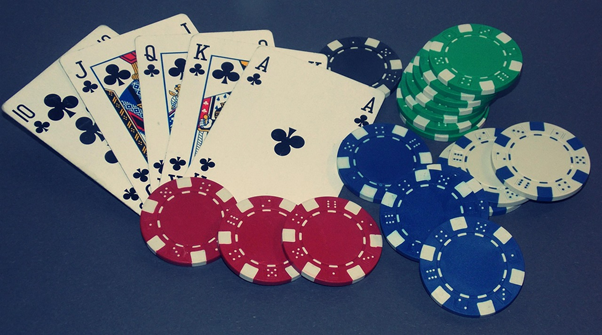Who doesn’t love a good poker scene? It makes for great entertainment, but these cinematic moments rarely capture what real poker actually involves.
Whether you’re watching James Bond outsmart villains at the card table or Matt Damon reading opponents in Rounders, movie poker creates misconceptions that can cost beginners dearly. Here are seven crucial lessons that silver screen showdowns consistently get wrong.
1. Most Hands Are Incredibly Boring
Films show hand after hand of pocket aces, straight flushes, and full houses. Real poker involves folding approximately 80% of your starting hands before the flop. You’ll spend far more time watching others play than participating yourself.
Professional players understand this fundamental truth. They wait patiently for profitable situations rather than forcing action. Those marathon sessions where pros grind for hours? They’re folding hand after hand, waiting for the right moment. Movies skip these mundane stretches.
2. Bankroll Management Matters More Than Big Bluffs
Characters in films routinely bet their cars, houses, or life savings on a single hand. This makes for high drama but represents catastrophic poker strategy. Successful players never risk more than a small percentage of their total bankroll on any individual game.
The general rule suggests keeping at least 20-30 buy-ins for your chosen stakes. Playing $1/$2 no-limit hold’em? You need $4,000-$6,000 set aside specifically for poker. This cushion protects against inevitable losing streaks that would otherwise end your playing career. As explained in this guide, there are many platforms with a wide variety of payment options, which also give players fantastic bonuses. These platforms understand that if you’re going to use your hard-earned money, security is important, and therefore have implemented security measures that are second to none.
3. Reading Physical Tells Is Overrated
That nervous eye twitch or shaking hand that reveals the villain’s bluff? These obvious physical tells rarely appear at real poker tables. Experienced players control their movements and expressions far better than Hollywood suggests.
Modern poker relies much more heavily on betting patterns, timing, and mathematical analysis. Online poker has proven this. Millions of hands are played daily without any physical interaction. The best players focus on:
- Bet sizing patterns
- Timing tells (how quickly someone acts)
- Historical tendencies
- Position-based frequencies
Physical tells exist but represent a tiny fraction of available information.
4. Emotional Decisions Destroy Your Game
Movie heroes make spiteful calls, revenge raises, and emotionally charged all-ins that somehow work out perfectly. These decisions would bankrupt any real player within weeks. Tilt, playing poorly due to emotional distress, ruins more poker careers than any other factor.
Professional players see poker as a business. Getting emotional about variance only leads to poor decisions and mounting losses. Maintaining composure during downswings separates winners from losers.
5. The Math Actually Matters
Films never show players calculating pot odds or discussing equity percentages. Yet these mathematical concepts form the foundation of profitable poker. Every decision at the table involves comparing risk versus reward.
Consider a simple example: The pot contains $100, and your opponent bets $50. You need to call $50 to potentially win $150. This means you’re getting 3-to-1 odds, requiring only 25% equity to break even. Understanding these calculations helps determine whether calling, raising, or folding generates long-term profit.
Players who ignore mathematics might win occasional pots through luck. Those who master the numbers consistently extract value from their opponents over thousands of hands.
6. Table Selection Beats Superhuman Reads
Movies portray poker as a battle between equally skilled opponents where psychology determines the winner. Reality looks different. The easiest path to profit involves finding games with weaker players rather than trying to outplay other professionals.
Even world-class players seek out soft games. Why battle other experts for small edges when recreational players offer much higher profit margins? This concept extends online, where players can quickly scan multiple tables to find the most profitable opportunities.
Pride keeps many decent players stuck at break-even. They’d rather compete against tough opponents than admit they need easier competition to profit consistently.
7. Variance Runs Longer Than You Think
That climactic hand where the hero rivers a straight flush to win the tournament? Pure variance determines short-term results far more than skill. The best player at any table might lose for weeks or even months despite making correct decisions.
Professional players measure success across tens of thousands of hands. They understand that individual sessions mean nothing in the greater scope. A recreational player might win their first five sessions through pure luck, while a professional endures a month-long downswing despite perfect play.
This extended variance frustrates beginners who expect immediate results from improved play. They study, practice, and implement proper strategy, yet still lose. Without understanding variance’s role, many quit just before their results would have turned positive.
Conclusion
Movie poker creates entertaining drama, but does not teach you how to play. Real poker involves patience, discipline, and mathematical precision rather than reading souls through sunglasses. Success comes from grinding, across thousands of hands, not winning massive pots through spectacular bluffs.
Understanding these differences helps new players set realistic expectations. Poker can be profitable and enjoyable, but it looks nothing like what Hollywood shows. Master the fundamentals, manage your bankroll properly, and prepare for variance’s inevitable swings.






